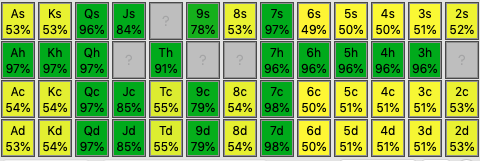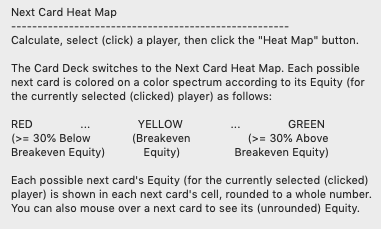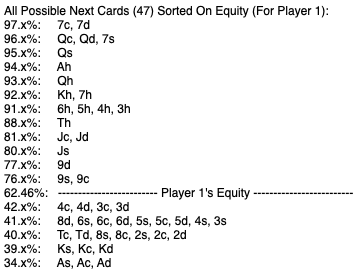In its simplest interpretation, an "out" improves your hand. This doesn't mean you win the hand, it just means you have improved. Of the 21 outs mentioned by MattRyder (nice work Matt), not all of these are guaranteed winners. If you are really hoping for the flush to hit with J high, you need to be a bit careful as there are currently 3 hearts higher than yours that your opponent could already have since high cards are generally held by players. The 9 and J could come and help your hand, but may end up costing you more chips than making you.
While understanding "outs" is important, I have started to shift my thinking towards "
equity" rather than outs. When thinking about equity you have to assess the ranges where you are already behind, the ranges where you are already ahead, and how possible turn/river cards affect both of these. This takes practice, but isn't too hard once you start thinking this way.
Equilab has an "Equity Trainer" in their tools menu. This is a very good way to practice thinking a little differently about where you are at, on the flop.















